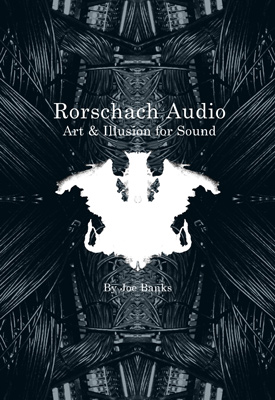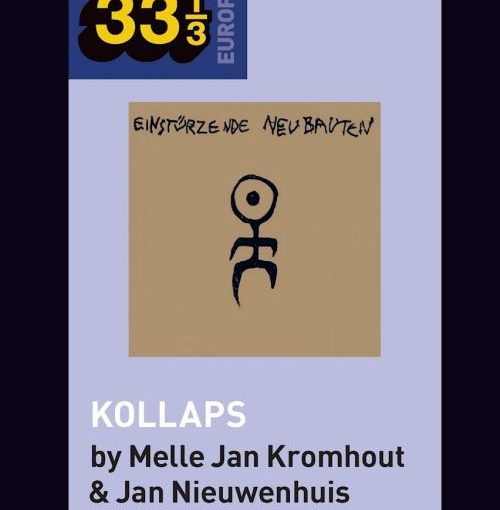Disinformation/Strange Attractor Press
 “I love the dead before they rise, no farewells, no goodbyes.” Alice Cooper’s “I Love The Dead” is surely the definitive romantic ode to the dearly departed, but he was by no means the first to spend his time romanticising those now six feet under.
“I love the dead before they rise, no farewells, no goodbyes.” Alice Cooper’s “I Love The Dead” is surely the definitive romantic ode to the dearly departed, but he was by no means the first to spend his time romanticising those now six feet under.
And if such a warped and ‘scientific’ belief in post-mortem things could persist in staunchly anti-religious and Communist Russia, it could survive anywhere. Bugger the Enlightenment, Darwinian natural selection and General Relativity, no matter these, instead ideas about the ‘the afterlife’ and the persistence of those that had ‘crossed over’ took off their religious vestments and instead cloaked themselves in quasi-scientific clothing that would have been every bit as preposterous, were it not actually pernicious for its perversion of the scientific method: from Victorian ‘ectoplasm’ to the photographic ‘evidence’ of the Cottingley Fairies (Arthur Conan Doyle looks on like a prize sap) right through to the ‘Enfield Poltergeist’ of 1977.
Another strand of enjoyably ludicrous ‘scientific era spiritualism’ is the so-called Electronic Voice Phenomena (EVP) movement, which believes that strange voices and shapes caught on recordings by modern technologies of reproduction – tape, radio broadcast, television, video recordings – are actually transmitted from the afterlife, that such recordings constitute nothing less than evidence of life after death. And it is the analysis of EVP that forms the central core of Rorschach Audio: Art & Illusion for Sound, Joe Banks’ fascinating and compact study of spiritualism, human perception, art and the workings of the human mind.Although early founders of the medium (no pun intended) of radio such as Edison and Marconi had already half-believed that it might allow contact with ‘the other side’, the EVP movement really began in the late 1950s when archaeologist, philosopher and former Papal portrait painter Friedrich Jürgenson discovered what he took to be disembodied voices from the afterlife captured in field recordings that he had made both of himself and of birdsong. The baton laid down by Jürgenson in his subsequent 1964 publication Voices from Space was swiftly and enthusiastically taken up by Konstantins Raudive, a Latvian parapsychologist and former student of Carl Jung, whose obsessive recordings of EVP are estimated to amount to over 100,000 hours. Although his early efforts were somewhat unimpressive, Raudive’s breakthrough moment came when he was listening to a recording one night and clearly heard a female voice saying “Va dormir, Margarete” (“Go to sleep, Margaret”), which he took to be a profound and moving comment on the recently deceased Margarete Petrautzki. Whether one chooses to draw a straight line between Raudive’s emotional state and the voices he heard, or to ascribe their origins genuinely to another dimension, what is not in doubt is that Raudive’s own 1971 book Breakthrough, which was accompanied by recordings of his ‘Raudive voices’, became a key touchstones of the EVP movement; the latter also became a particular favourite of ambient and sound artists seeking to make hay by using and sampling the voices’ unsettling lo-fi spookiness.
And it is this point that Banks uses as the jumping off point for a fascinating exploration not, as might be expected, of whether EVP is ‘genuine’ or not (he spears the patently unscientific poppycock of EVP on a sharp scalpel within the first few pages), but of how the creative listening inherent in EVP-based interpretation of sound is a profoundly revealing of human perception and creativity. Taking exploratory digressions into a fascinating myriad of subjects including the work of EH Gombrich monitoring German transmissions at the BBC World Service during World War II (it was Gombrich that first informed Churchill that Hitler was dead based on his interpretation of the unscheduled transmission of a Bruckner symphony), Jean Cocteau, Victor Hugo, William Burroughs, sound experiments and visual trompe l’oeil, Rorschach Audio examines the very nature of how human beings interpret sense data and then construct a world view from it, and how the important threads of creative connectivity attendant with this are shot through the arts and sciences.Anyone who ever listened to The Police singing “So Lonely” and thought it was about BBC broadcaster Sue Lawley, or who only heard “She’s So Popular” when Kate Bush sang the intro to Peter Gabriel’s “Games Without Frontiers” (‘Jeux Sans Frontières’ as they say in France) has, in Banks’ very common-sensical and democratic interpretation, already struck off down a path towards creative expression, and in the warp and weft of these diverse and captivating threads, Banks attempts to find the locus (solus) for all manner of perceptual and psychological phenomena. And any narrative that accomplishes such a laudable and ambitious aim whilst taking in both nutty Holloway Road sound genius Joe Meek and deeply eccentric and influential proto-Surrealist and caravanist Raymond Roussel (“My fame will outshine that of Victor Hugo or Napoleon”) is surely walking the walk as well as talking the (disembodied) talk.
There are a couple of small flies in the de luxe Givenchy Rorschach Audio ointment – being a collection of four related articles some judicious editing might have tightened up a couple of examples of minorly irritating repetition, and the lazy characterisation of Aleister Crowley as a “Satanist” seems uncharacteristic of a researcher of Banks’ obvious talent and ability – but these are, in total, very small beans within such an impressive grande project.
Packaged in a satisfying 10 x 4.5in format, and bearing a cover that might have oozed out of HR Giger’s head in a quiet moment, Rorschach Audio: Art & Illusion for Sound slips perfectly into an inside jacket pocket. Sit on a park bench, immerse yourself in Banks’ entrancing narrative and use it to ruminate on John Cage’s gnomic maxim: “There is no noise, only sound.”
-David Solomons-




One thought on “Joe Banks – Rorschach Audio: Art & Illusion for Sound”
“I was not content to believe in a personal devil and serve him, in the ordinary sense of the word. I wanted to get hold of him personally and become his chief of staff” – The Confessions of Aleister Crowley, chapter 5, 1929
“I bind my blood in Satan, All that lieth betwixt my hands, To thee, the Beast, and thy control, I pledge me; body, mind and soul” – Aleister Crowley, Satanic Extracts
“In 1934, Crowley was declared bankrupt after LOSING a court case in which he sued the artist Nina Hamnett for calling him a black magician in her 1932 book, Laughing Torso”
http://en.wikipedia.org/wiki/Aleister_Crowley